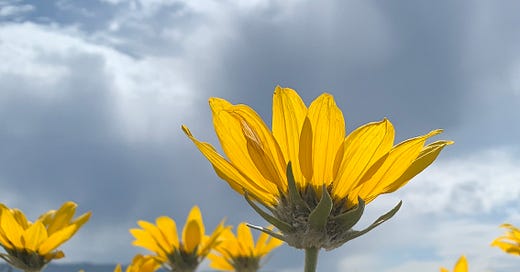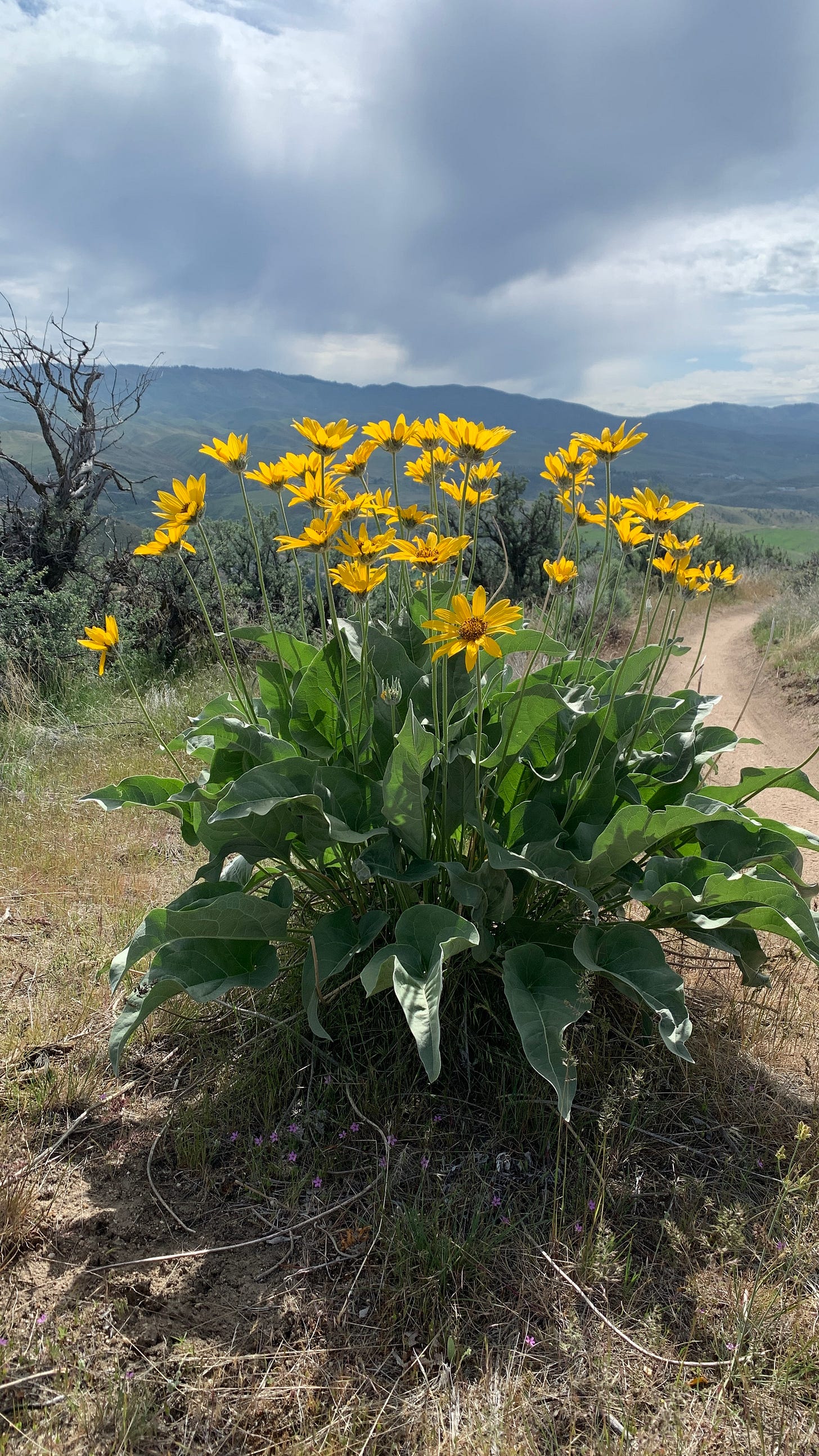Symbolism of Plants: Arrow Leaf Balsam
Exploring the symbolism of plants and how this can aid us in our psycho-spiritual lives as well as our physical.
I’m getting antsy for spring and eagerly awaiting the first flowers to start perking up. Where I live in Idaho the first flowers to start blooming are the arrow leaf balsams. These flowers are not only gorgeous but also carry a lot of meaning as well as healing properties for wounds and respiratory ailments. They are one of my favorite plants and I can’t wait for this soggy winter to be over and for the hills to be covered in yellow instead.
(Disclaimer: Nothing in this article is meant as medical advice or as an invitation to go and harvest these plants. It is intended to be informative from an intellectual standpoint only)
As spring approaches my thoughts have been turning to the forest and the plants that will soon be shooting up. Foraging is one of my favorite activities. I love getting to know the local flora and fauna by wandering the foothills or the ponderosa pine forests.
It can be a difficult and even daunting task remembering what a plant is and what its uses are. This is where the use of symbolism comes into play. Every plant carries a message about who it is. These symbolic applications are known as signatures. Plants carry these signatures to tell us what their healing properties are for. The plant itself is not concerned with what signatures or symbols we prescribe to it. This is a strictly human thing we do to nature. For example, we assign the symbol of strength and wisdom to an oak tree based on the hardness of its wood, the nourishment it provides to other creatures. These attributes mean nothing to the tree. It simply grows and lives its life without any worry as to whether it is strong or wise. For the herbalist though it is this symbolism that reminds us that the oak tree is full of tannins that will tighten and strengthen wounds, sore throats, and troubles with the gut.
The wisdom and strength of the oak goes beyond the herbalist’s signatures. These symbols are also pertinent in dream interpretation. For example, you dream you are standing under an oak tree. Most people would assume this is a meaningless dream if not familiar with the oak’s assigned attributes. But if they were familiar then they may receive great meaning from the dream. This extends into the world of art, music, and daily life.
There is one plant in particular I look forward to seeing every year: the arrow leaf balsam. This sunny flower grows in large stands across the dry sunny hills of the West. It looks similar to a short sunflower, its leaves shaped like a large arrowhead with a slight fuzz. They are the beckoners of spring, and brimming with symbolism. Let’s take a non herbalist stance first. If laymen were asked to assign a symbol to this flower the answer would come easily and readily: the sun. The bright yellow blooms are an early spring flower that reflect the vision humans have of the sun. They are bright, yellow and reach upwards. Spring itself symbolizes the return of the sun both metaphorically and in reality.
The next symbol of the balsam is so obvious it’s in the name. The leaves are shaped just like an arrowhead. This shape reminds me of piercing, hunting, accuracy, and death. Counteracting the hard symbol of the arrow is the soft fuzzy leaves. This paradox gives a more in-depth understanding of what this flower means to us. The arrow is hard and masculine but the fuzz is soft and feminine. Both the shape and the texture of these leaves protect and nourish the plant. This dual energy represented in the plant reminds us of the power of unity within ourselves and our exterior lives.
Unity brings me to the next not so obvious symbol of the arrow leaf balsam. This plant grows from a long and sturdy tap root. Each new plant springs from a previous plant's root. It can take decades for a stand of balsam to form. Each plant originates from a single tap root making it notoriously difficult to harvest. The strength a community provides to the individual is often lost in our modern way of life. Next time you see a large stand of balsam on a hill remember, that is a community of flowers. Together they are united and have lived together for years. Nourishing and strengthening each other.
This brings us to the importance of this symbolism for the herbalist. The signatures of the balsam tell the healer exactly what its healing power is. The bright sunny flowers following the darkness of winter are used to drive away seasonal depression. A tea or tincture is used for this purpose. The shape and texture of the leaves indicates healing. The sharpness of the arrow reminds one of wounds, the fuzziness of soft tissues. Salves and oils made from the leaves help heal injuries and other tissue damage. The roots can be used for all the above but also for afflictions of the lungs. Their shape and length are akin to the bronchioles. The roots also carry warming resin that is helpful in wound healing and infection.
It is not necessary to use herbs and plants medicinally to benefit from the meaning they carry. The message of an arrow leaf balsam can be spread and shared through many ways: art, music, appreciation and writing to name a few. Understanding the meaning behind a thing or person and creature gives us the power of that thing. It gives us a deeper and richer meaning to life.
If you like what you have been reading here please consider sharing with your friends and family.
Other ways to support The Serenity Post:
Become a subscriber here:
Check out my Etsy shop for original artwork both in physical and digital print form: Etsy Shop






Several springs past, I attempted to dig up several Arrow Leaf Balsam tap roots in the Owyhees near our home. I tried to transplant them in my garden to no avail. Since then, I have more kindly harvested leaves without harming the community of plants in the wild. Thank you for your insightful article on the symbolism of plants. In the Hebrew Scriptures, the prophet Isaiah likens faithful followers of God to the oak, calling them, "oaks of righteousness." (Isaiah 61). I fairly certain Isaiah would agree with you on your presentation of plant symbolism.